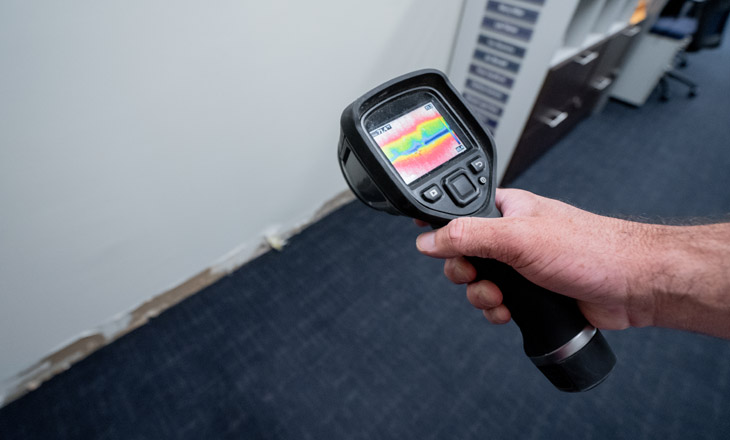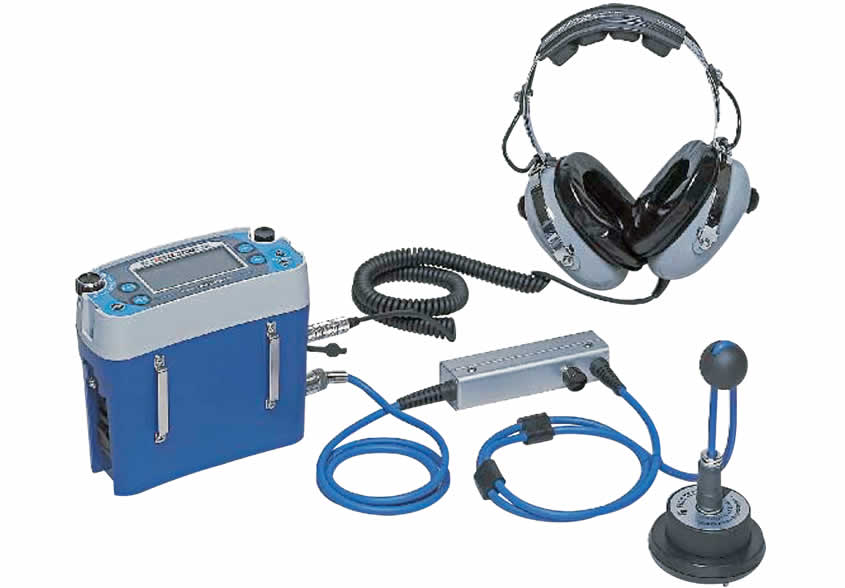Water Leak Detection: Just How to Recognize and Deal With Leaks Prior To They Create Damages
Water Leak Detection: Just How to Recognize and Deal With Leaks Prior To They Create Damages
Blog Article
Cutting-edge Solutions for Very Early Detection of Water Leakages in Buildings and Framework
As the stability of buildings and facilities is critical, the difficulty of early discovery of water leaks has actually spurred ingenious solutions that guarantee to revolutionize the method we guard against possible damages. From innovative leak detection modern technologies to the deployment of IoT sensing units for real-time monitoring, the landscape of leak prevention is advancing quickly. Artificial intelligence algorithms use a glimpse into the future of leakage prediction, while thermal imaging offers a non-intrusive method for identifying surprise leaks. Automated water circulation analysis systems are improving exactly how leaks are recognized and dealt with, paving the method for an aggressive method to water leak discovery. Each of these remedies holds the key to making sure the integrity and longevity of our built atmosphere, triggering a change in the direction of an extra lasting and reliable future.
Advanced Leakage Detection Technologies
Advanced leak detection modern technologies, geared up with advanced sensors and algorithms, play a vital function in quickly recognizing and identifying water leakages in various settings. These modern technologies use a mix of acoustic, thermal, and electro-magnetic noticing methods to detect leakages properly. Acoustic sensors spot the sound of escaping water, permitting for specific localization of the leakage resource. Thermal imaging spots temperature changes created by water leak, supplying another effective approach for leak identification. Electro-magnetic sensors can recognize modifications in electromagnetic areas created by water, using yet another layer of leakage detection capacity.

IoT Sensors for Real-Time Surveillance
In the realm of contemporary water leakage discovery, the integration of IoT sensors for real-time tracking stands for a pivotal development in improving positive leakage discovery capabilities. These sensors provide constant surveillance of water supply, offering real-time information on water circulation prices, pressure variations, and temperature level adjustments. By leveraging IoT innovation, these sensors can identify also the smallest anomalies in water use patterns, allowing very early recognition of possible leakages before they escalate into major problems.
IoT sensing units send information to a centralized platform, where advanced algorithms examine the details and create signals or notifications when irregularities are found. This real-time monitoring capability allows property proprietors or center supervisors to without delay address leaks, reducing water damage, reducing repair service costs, and preserving water resources.
In addition, IoT sensors can be integrated with structure monitoring systems, allowing for computerized actions to discovered leaks, such as closing off water valves or activating pumps to reduce the effect of leaks. Overall, the execution of IoT sensing units for real-time monitoring significantly boosts the effectiveness and effectiveness of water leakage detection in structures and infrastructure.
Artificial Intelligence Algorithms for Leak Forecast

One key advantage of making use of maker knowing for leakage forecast is its capability to continuously image source learn and boost its accuracy over time. As even more data is accumulated and fed right into the algorithm, it can refine its forecasts and adapt to changing problems, eventually increasing the reliability of leakage discovery systems.
Furthermore, machine understanding algorithms can help in recognizing refined indications of leaks that may go undetected by typical tracking approaches. water leak detection. By examining complex data collections in real-time, these algorithms can give very early warnings and informs, permitting prompt intervention and preventive upkeep to mitigate prospective water damage and linked costs
Using Thermal Imaging for Leakage Detection
Thermal imaging technology uses an encouraging approach for discovering water leakages in different systems and frameworks. By making use of infrared radiation and temperature level differences, thermal imaging cameras can identify hidden leaks that are not easily visible to the naked eye.
One of the key benefits of thermal imaging for leakage discovery is its non-intrusive nature. Unlike typical approaches that might call for burglarizing walls or floors to locate leakages, thermal imaging enables non-destructive screening. This not just saves time and decreases costs but also minimizes disturbance to the structure or framework being examined. Furthermore, thermal imaging can swiftly scan large areas, providing a thorough overview of possible leakage sources in a timely manner. On the whole, making use of thermal imaging modern technology boosts the performance and accuracy of water leak discovery, making it a beneficial device for preserving the stability of buildings and frameworks.
Automated Water Circulation Analysis Systems
Just how can automatic water circulation analysis systems revolutionize the discovery and management of leakages in various systems and frameworks? Automated water flow evaluation systems provide an aggressive method to leakage detection by continually keeping an eye on water flow rates and patterns. By developing baseline information, these systems can quickly determine deviations that may show a leak, allowing punctual intervention to avoid comprehensive damages.
These systems make use of advanced formulas to assess real-time data and give immediate notifies when abnormalities are detected, permitting speedy action to be taken. Furthermore, computerized water flow analysis systems can be incorporated with structure management systems or IoT platforms, boosting total performance and enabling remote monitoring capacities.
Moreover, the information gathered by these systems can be utilized for predictive maintenance purposes, helping to identify potential weak points in the infrastructure prior to leakages happen. Generally, the check application of automatic water flow review analysis systems can significantly boost leakage detection and administration practices, ultimately bring about set you back savings, decreased water wastage, and increased sustainability in structures and facilities.

Verdict
To conclude, the integration of advanced leak detection technologies, IoT sensors, artificial intelligence algorithms, thermal imaging, and automatic water flow analysis systems provides innovative services for early detection of water leaks in buildings and infrastructure. These technologies make it possible for real-time surveillance, forecast of leakages, and effective detection methods to avoid water damage and wastefulness. Implementing these remedies can aid in preserving the stability and sustainability of water systems in various setups.
Report this page